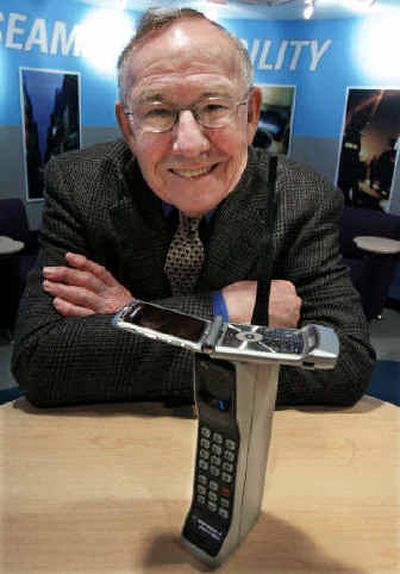Razr puts Motorola on cutting edge

CHICAGO — Technology always trumped good looks at Motorola Inc., whose distinguished 77-year resume includes the first car radio, walkie-talkie and cell phone but not a lot of tech beauty prizes.
Geeks like Jim Wicks, working for a competitor a decade ago, were impressed with its well-engineered products but winced at their industrial look and relentlessly black and gray colors. “I thought, ‘Wow great products but why are they so ugly?”’ recalled Wick, now Motorola’s chief phone designer.
Today, plain is out and sleek and stylish are in as a new focus on design wins back customers and market share at Motorola — a comeback from a long decline in full force after 1 1/2 years.
The symbol of the resurgence is the ultra-thin Razr, whose success helped vault the Schaumburg, Ill., company over worldwide leader Nokia Corp. as the top phone seller in North America last year and, even more noteworthy, stamped pioneer Motorola as the trendsetter again in innovative design.
The $450 Razr embodies “a departure from the stodgy, engineering-driven, Midwestern company that was Motorola,” according to Yankee Group analyst John Jackson.
Those core values may make for a strong foundation but they don’t necessarily resonate in an age where so many consumers want their choice of cell phone to define cool.
“These guys have to evolve from an engineering-focused company to a hip, slick, dynamic, rapidly moving consumer electronics company,” Jackson said. “Thus far, they’ve been able to do that.”
The device formerly known as the cell phone, as Motorola insiders refer to it, has itself been on an industrywide roll as consumers embrace its growing tools — camera, e-mail, music, speakerphone and shrinking size. The number of mobile phones sold worldwide surged 30 percent to 674 million last year en route to a projected 730 million-plus in 2005, according to the Gartner research firm.
“It’s gone from a communications tool to a consumer electronics device in the last 10 years, or in some cases an object of self-expression,” said Wicks.
Motorola appeared to have a head start on the development of consumer-conscious cell phones in 1996 with the pocket-sized StarTAC, a popular early clamshell or flip phone. But a series of subsequent operating and strategic flubs weakened sales, dropping it behind Nokia and threatening to tarnish its reputation for innovation.
That all began to change about four years ago with a bigger embrace of style and fashion.
Mike Zafirovski, then chief of the cell-phone business, expanded the design team and hired wunderkind Wicks away from Sony Corp., where he’d headed the Japanese company’s innovation center. Motorola poured more money into consumer research, conducting global studies and researching lifestyle trends as it began ramping up design. The number of phones it designs annually has risen by 40 percent since, to between 60 and 100.
The company subsequently opened a design center in downtown Chicago to attract young talent disinclined to work at its cell-phone headquarters in the distant suburb of Libertyville, Ill.
Today, Wicks leads a staff of over 200 design employees worldwide that reflects a mixture of right- and left-brain thinking, including sociologists, psychologists, musicologists, engineers, graphics designers and software and colors specialists.
It’s all about making consumer tastes the priority instead of technology, said the 41-year-old Wicks, a rapid-fire talker wearing glasses, a pink shirt and the occasional Jim Carrey grin.
“Back then we were saying ‘Here’s the features and the technology,’ then put a wrapper around it,” he said in an interview at Motorola’s office overlooking the Lake Michigan shoreline. “Now the starting point is ‘What does the consumer want?’ and then apply the technology to that.”